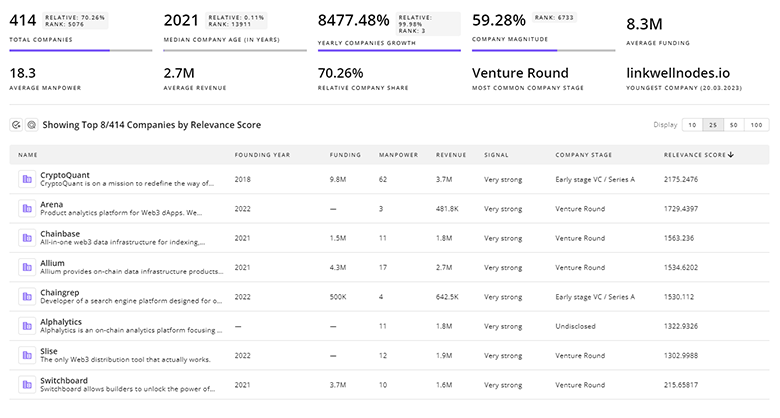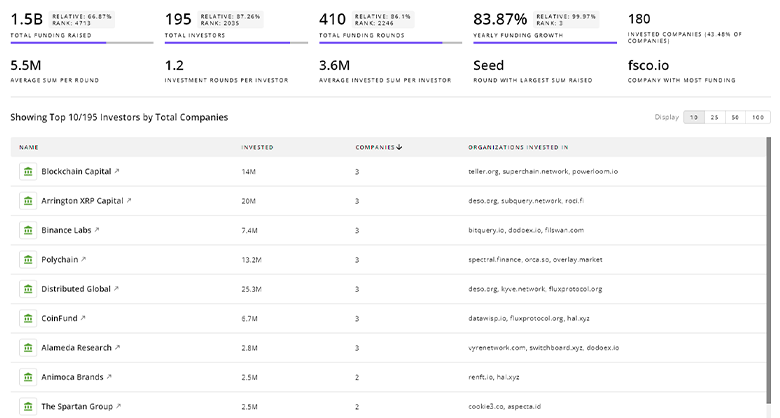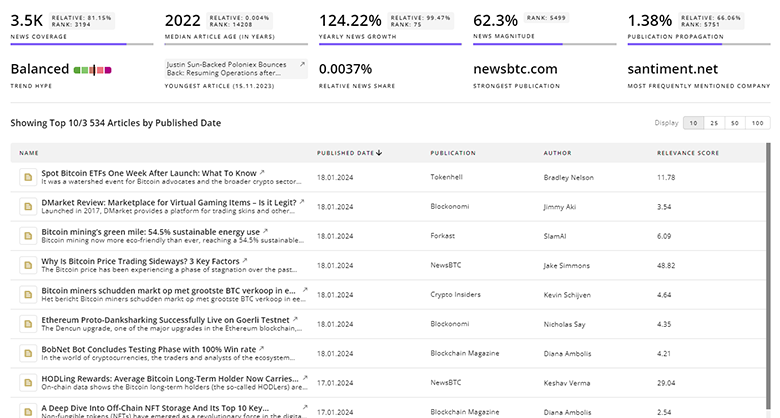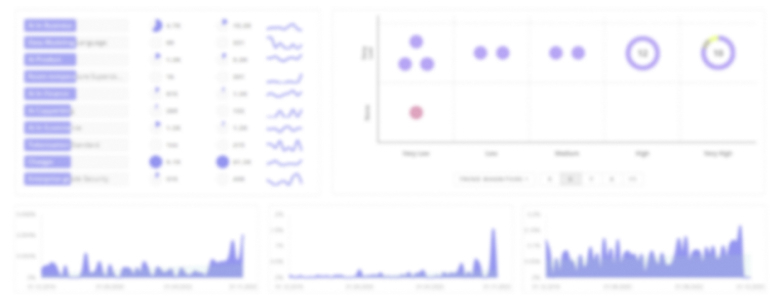
Virtual Reality Gaming Report
: Analysis on the Market, Trends, and TechnologiesThe virtual reality gaming market is entering a high-growth commercialization phase: average session length rose to 45 minutes in Q2 2024, signaling deeper engagement and higher monetization potential for games and live services. Market fundamentals support rapid expansion — the internal data cites a 2022 market size of USD 27.25 billion with a projected CAGR of 29.5% through 2028, while independent market analysis also forecasts multi-year, triple-digit growth in several segments driven by cheaper standalone headsets, 5G/cloud streaming, and stronger social multiplayer offerings Virtual Reality Gaming Market Size, Share & Trends Analysis Report and Virtual Reality In Gaming Market Trends 2025 (The Business Research Company) Virtual Reality In Gaming Market Trends 2025. Together, longer sessions, rising ARPU and platform investments point to a near-term window for platform consolidation, middleware plays that lower hardware friction, and differentiated sensory peripherals as the primary value-capture routes.
69 days ago, we last updated this report. Notice something that’s not right? Let’s fix it together.
Topic Dominance Index of Virtual Reality Gaming
The Topic Dominance Index offers a holistic analysis of Virtual Reality Gaming, merging data from 3 diverse sources: relevant published articles, newly founded companies, and global search metrics.
Key Activities and Applications
- Immersive multiplayer and social VR experiences — large-scale, persistent worlds and short-form social game sessions drive engagement and repeat play; social features now form a key retention vector for VR platforms and broader market commentary on social VR adoption Virtual Reality in Gaming Market, Opportunity and Growth Drivers 2024-2032.
- Location-based entertainment (LBE) and free-roam arenas — turnkey arenas and LBE centers supply social, hardware-intensive experiences that expand VR reach beyond early adopters Zero Latency VR Dublin and location-based market forecasts Location-based Virtual Reality Market Research Report.
- Fitness, rhythm, and wellness gaming — activity-based titles (integrating biometric feedback, adaptive difficulty) increase session times and ARPU while opening B2B distribution via gyms and insurers and The Business Research Company trend notes on VR fitness.
- Procedural and AI-assisted content pipelines — generative tools accelerate content production for indies and live service titles, reducing iterative costs and increasing catalog breadth and industry trend overviews.
- Cloud-streamed VR and headset-less distribution — cloud rendering and mobile streaming extend high-fidelity experiences to lower-spec devices and enable cross-platform access, addressing the hardware cost barrier and multiple market analyses citing cloud gaming as a core driver.
Emergent Trends and Core Insights
- Hand- and body-centric interaction is rising — patent activity and product launches show strong movement to controller-free input (hand tracking, full-body capture), enabling more natural gameplay for rhythm, fitness and social titles; patent filings for hand tracking rose sharply, concentrated among major assignees.
- So what: controller-free inputs lower adoption friction for casual audiences and create new genre mechanics (dance, gesture puzzles) that increase average session length and monetizable engagement.
- Standalone/mobile headset dominance and user scale — mobile/standalone devices now represent a majority of active devices and are the main vector for mass adoption.
- So what: developers should prioritize cross-compiled, performance-scaled titles and design monetization for mobile headset usage patterns rather than PC-high-end exclusives.
- Sensory immersion (haptics, full-body suits, motion platforms) converges with software — commercial haptic devices, gloves and suits move from R&D to enterprise and premium consumer deployments (companies producing gloves, suits and treadmills) TESLASUIT product positioning and haptics specialist progress HaptX.
- So what: premium content and training customers will pay for higher fidelity sensory layers; middleware and integration services that bridge haptics to game engines will capture outsized value.
- Cloud streaming and headsetless innovations — streaming reduces device friction and enables PC-grade experiences on standalone headsets; headsetless approaches (camera + AI) aim to bring VR-like interactions to broader screens RiftCat PC-streaming history.
- So what: companies that optimize latency, codecs and edge delivery for interactive VR will unlock new user segments and reduce customer acquisition friction.
- Evolving monetization: subscriptions, ARPU lift and play-to-earn experiments — internal data shows ARPU rising to $28 driven by in-game purchases and subscriptions, with play-to-earn appearing in a rising minority of top titles and market reports stressing subscription models for content distribution.
Technologies and Methodologies
- Inside-out tracking and low-latency positional systems — inside-out cameras and sensor fusion enable untethered six-degree-of-freedom experiences, lowering setup needs for consumers and LBEs.
- Spatial audio and voice spatialization engines — spatial sound sharply improves presence in social VR and competitive play; platform reports and product notes highlight spatial audio as an engagement multiplier.
- Haptic feedback stacks (gloves, suits, EM stimulation) — from discrete vibration arrays to force feedback and electrostimulation, haptics are moving into production-ready hardware for entertainment and enterprise use.
- Procedural generation + generative AI pipelines — AI tools accelerate level and asset generation, enabling smaller teams to ship larger worlds and supporting live operations with dynamic content.
- Cloud rendering and 5G/edge architectures — edge compute combined with 5G reduces perceived latency and supports high-fidelity streamed content to lower-power headsets; market sources identify cloud streaming as a core adoption driver and mainstream analyses.
- Photogrammetry and volumetric capture — high-fidelity real-world reconstruction enables location-based tourism and realistic social spaces; companies applying large-scale photogrammetry show strong product-market fit for virtual travel and educational content and Brink XR real-world capture work Brink.
- Evidence-based comfort methods and locomotion mechanics — improved locomotion (teleport variants, snap settings), foveated rendering and higher refresh reduce motion sickness and extend session length, a key retention lever.
Virtual Reality Gaming Funding
A total of 645 Virtual Reality Gaming companies have received funding.
Overall, Virtual Reality Gaming companies have raised $13.5B.
Companies within the Virtual Reality Gaming domain have secured capital from 2.1K funding rounds.
The chart shows the funding trendline of Virtual Reality Gaming companies over the last 5 years
Virtual Reality Gaming Companies
- OutReal — OutReal is building cloud-streamed delivery and middleware that target standalone headsets, enabling PC-grade titles to reach Quest-class devices without hardware upgrades. Their approach focuses on latency optimization and cross-platform streaming to widen addressable audiences and reduce the entry barrier for high-fidelity VR gaming.
- Viziverse AI — A small AI-first studio aiming to enable headsetless and camera-driven VR interactions for live action games; they focus on computer vision + ML to offer alternative distribution pathways that sidestep headset ownership as the only access route to immersive play.
- Realities.io — Specializes in photogrammetry and 1:1 real-world environment capture to create highly realistic VR spaces used in tourism, education and narrative games; their pipeline reduces level-creation time for photoreal experiences and supports multiuser exploration.
- NeuroDigital Technologies — Developer of haptic gloves that translate tactile cues into fine-grained vibration feedback for realistic object interaction; their hardware addresses a growing demand for touch in VR training and gameplay.
- Villa — A no-code social VR creation and collaboration platform for creators and teams; Villa prioritizes low friction authoring for events and team-based experiences, enabling organizations to publish virtual "spaces" without deep engineering investment.
Stay connected with industry movements through TrendFeedr’s Companies tool, which covers 4.2K Virtual Reality Gaming companies.

4.2K Virtual Reality Gaming Companies
Discover Virtual Reality Gaming Companies, their Funding, Manpower, Revenues, Stages, and much more
Virtual Reality Gaming Investors
Discover investment patterns and trends with TrendFeedr’s Investors tool based on insights into 2.4K Virtual Reality Gaming investors. This tool is essential for understanding the financial ecosystem of Virtual Reality Gaming and developing successful investment strategies.

2.4K Virtual Reality Gaming Investors
Discover Virtual Reality Gaming Investors, Funding Rounds, Invested Amounts, and Funding Growth
Virtual Reality Gaming News
TrendFeedr’s News feature grants you access to 6.7K Virtual Reality Gaming articles. This tool supports professionals in tracking both past trends and current momentum in the industry.

6.7K Virtual Reality Gaming News Articles
Discover Latest Virtual Reality Gaming Articles, News Magnitude, Publication Propagation, Yearly Growth, and Strongest Publications
Executive Summary
The data paints a clear strategic choice for market participants: prioritize accessibility or sensory premium. Accessibility plays win scale by lowering hardware friction through cloud streaming, mobile/standalone optimization and headsetless approaches; sensory premium plays capture high ARPU from specialized content, training and LBE deployments through haptics, motion platforms and photoreal environments. Successful companies will link one side to the other by offering interoperable middleware and content ecosystems that (1) serve mass audiences via streaming and optimized pipelines, and (2) deliver premium differentiated experiences for customers willing to pay for higher fidelity. Investors and product leaders should therefore evaluate opportunities across three linked arenas — platform integration, latency-sensitive streaming infrastructure, and sensory hardware integration — and favor strategies that create defensible, cross-segment routes to customers (e.g. content catalogs that scale across streamed and native deployments, or SDKs that map haptics into multiple engines). This combined approach balances near-term monetization with long-term scale.
We're looking to collaborate with knowledgeable insiders to enhance our analysis of trends and tech. Join us!












